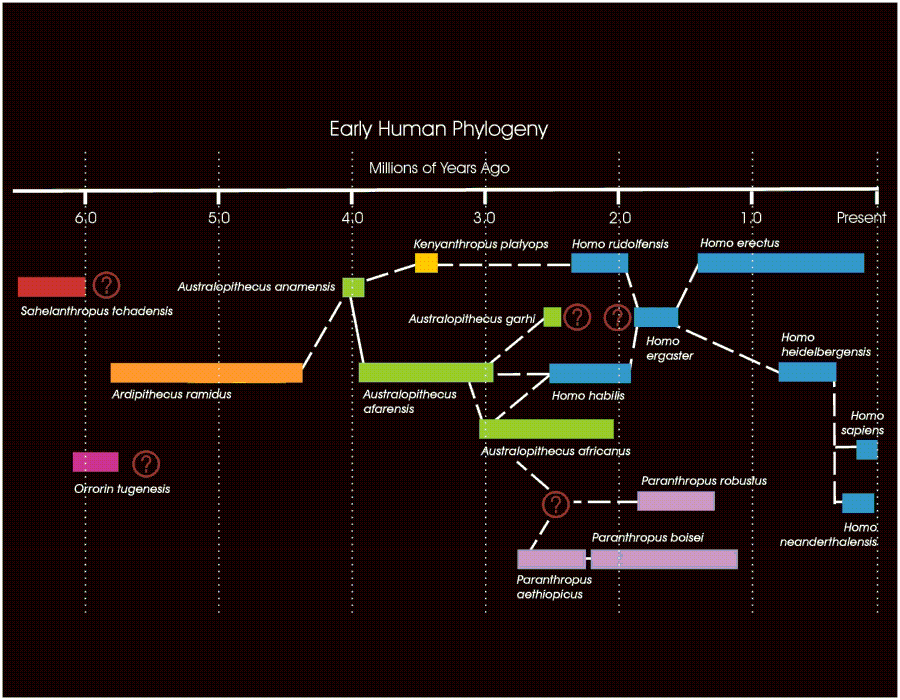As you can see from the title, I'm been confirmed a place at a dig in Montlleó open-air site in the summer. The site is about 2 hours from Barcelona. It's Magdalenian - about 15,000 years old - and I'll be excavating and digging at the site and analysing lithic remains in the lab for three weeks, all with SERP (http://www.ub.edu/SERP/index.htm). All in all I'm very excited, and even better I'll only be paying for the flight and hopefully the sun will come out! A dig and a tan. What could be better for an Arch and Anth student?
I finished my first piece of work of this term yesterday (excluding my collections and their anxiously-anticipated results) on African Plio-Pleistocene hominins and their characteristics. We complied a fact-file of hominins from Ardipithecus ramidus (Late Miocene/Early Pliocene - about 5.7 mya (million years ago) to Homo ergaster (African erectus) which is thought to have lived 1.9 million mya. We also had to draw a lineage of these species and multiple genus, so I got to use my colouring pencils...at last! I used this phylogeny as my basis, which I first saw from Mike Petraglia's lectures on human evolution.
So I was reassured by my tutor today he uses the same one too (I think it's from the Smithsonian Institute). So many changes have occurred morphologically in such a 'small' amount of time. At first I questioned the amount of catergories paleoarchaeologists had 'split' the fossils into; however, this approach is opposed to 'lumping', where you bung a lot of similar-featured fossils together in one group. There's a lot of debate as to which group some fossils belong to, as you can imagine. I'm really enjoying learning about my very, very old roots, and still have a lot of questions to ask; what behavioural changes have happened apart from physical ones? Which species did we descend from? Why do I feel so old right now? But questions are good. A recent article in Nature argues against the assumption that Homo habilis was the first to use tools; instead, it might have been Australopithecus afarensis, a gracile Australopithecus found in sites in East Africa. You can read it here: http://www.nature.com/nature/journal/v466/n7308/full/nature09248.html
It just shows there are many questions about out evolutionary past that are still unanswered. I'd like to answer some of these one day.

No comments:
Post a Comment